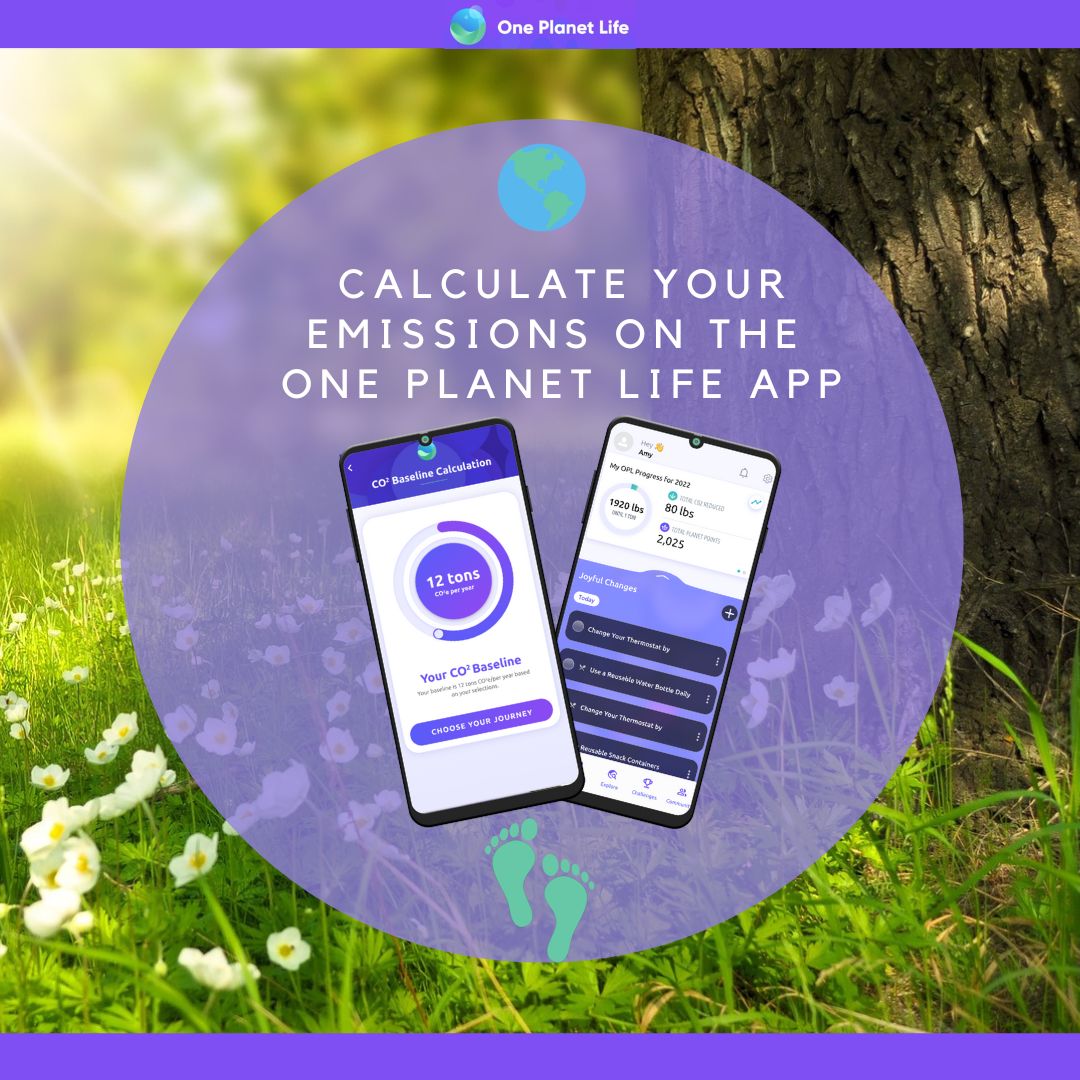In an era of growing environmental concerns, understanding and reducing our carbon footprints have become crucial in ensuring a healthy planet where future generations can thrive.
A carbon footprint is a measurement of the greenhouse gas emissions produced directly or indirectly by an individual, organization, event, or product.
Now more than ever, concern about our planet’s future is on the minds of many. According to an annual Gallup survey, public concern about the quality of the environment is near its two-decade high, with 44% of Americans worrying “a great deal” about it.
Carbon footprints allow for the assessment of our impact on climate change. They can help us make informed choices to minimize our environmental footprint, contributing to a future flourishing ecosystem for humanity and the wildlife around us.
What is a Carbon Footprint?
A carbon footprint primarily measures the amount of carbon dioxide (CO2) emissions produced as a result of human activities. However, it also includes other greenhouse gases like methane (CH4) and nitrous oxide (N2O). These emissions are primarily generated by burning fossil fuels for energy, industrial processes, transportation, and other activities.
There are two main types of carbon footprints:
- Direct Carbon Footprint: The direct carbon footprint refers to emissions produced from activities that we directly control or engage in. This includes energy consumption in our homes, transportation choices, and personal activities such as cooking, heating, and using appliances. By analyzing and optimizing our direct carbon emissions, we can significantly reduce our environmental impact.
- Indirect Carbon Footprint: The indirect carbon footprint, also known as the embodied carbon footprint, encompasses emissions associated with the production, transportation, and disposal of goods and services we consume. This includes the carbon emissions released during the extraction of raw materials, manufacturing, packaging, transportation, and waste management. Understanding our indirect carbon footprint enables us to make more informed decisions as consumers and support sustainable practices throughout the supply chain.
Calculating Carbon Footprints
Accurately calculating a carbon footprint can be complex, as it involves measuring emissions from various sources. However, the One Planet Life app can help you track and measure the impact of your lifestyle changes to live more sustainably and encourage you to build greener habits. It works like a climate fitness app, where you set goals for reducing CO2, track your progress, and gain support from others traveling on their unique sustainability journeys.
The app takes the guesswork out of which eco-friendly actions impact climate change most. There are several preset sustainability journeys to choose from, or you can create your own to start reducing your carbon footprint one metric ton at a time. Action categories include food, travel, goods, home, reduction, and reuse.
Ways to Reduce Your Carbon Footprint
Reducing carbon footprints is a responsibility that requires both individual and collective actions because the challenges posed by climate change and environmental degradation are vast and complex. Every individual has a role to play in minimizing his/hers carbon footprint. By making conscious choices in our daily lives, we can collectively make a significant impact on reducing greenhouse gas emissions.
Recognizing the environmental impact of our choices and behaviors is the first step.
When individuals take responsibility for their carbon footprints, they become conscious consumers and actively seek more sustainable options. Individuals can adopt sustainable practices in various aspects of life, making small changes that snowball and add up over time.
Shifting personal habits can inspire others by demonstrating environmentally responsible behaviors. Sharing knowledge, participating in community initiatives, and engaging in conversations about sustainable living can encourage others to take action.
One of the most impactful ways to reduce your carbon footprint is by improving energy efficiency in your home or workplace. This includes using energy-saving appliances, unplugging devices when not in use, insulating buildings, optimizing heating and cooling systems, and adopting renewable energy sources like solar or wind power.
Transportation is a significant contributor to carbon emissions. According to the Environmental Protection Agency (EPA), 28% of 2021 greenhouse gas emissions originated from transportation. The transportation sector generates the largest share of greenhouse gas emissions. Making matters worse, over 94% of the fuel used for transportation is petroleum-based, primarily gasoline and diesel.
Choosing greener transportation options such as walking, biking, or using public transportation can significantly reduce your carbon footprint. If possible, consider using electric vehicles or carpooling to minimize emissions further.
Being mindful of your consumption habits can make a significant difference.
Opt for energy-efficient and eco-friendly products, reduce waste by reusing and recycling, and choose locally sourced and sustainably produced goods whenever possible. Consider the lifecycle of products and their embodied carbon emissions before making purchasing decisions.
The food we consume also contributes to our carbon footprint. Adopting a more plant-based diet and reducing meat consumption, particularly from livestock with high methane emissions, can have a positive environmental impact. Support local and organic farmers when possible, as cutting distribution emissions can make a significant impact.
Why Reducing Our Carbon Footprints Matter
It’s no secret that emissions heavily contribute to global warming and climate change. Understanding and reducing your carbon footprint is crucial to mitigate the environmental challenges we face.
By monitoring and minimizing your carbon footprint, you become an active participant in climate stabilization efforts. Individual actions, when multiplied by millions, can make a substantial collective impact. A smaller carbon footprint translates to reduced ecological damage, protection of natural resources, ecosystems, and biodiversity, and preservation of the planet for future generations.
Focus on reducing carbon emissions often leads to healthier lifestyles as well. Sustainable choices like walking or cycling instead of driving, consuming locally sourced organic food, and opting for renewable energy sources can positively impact physical and mental well-being.
While climate change can often seem like an overwhelming global issue, the choices of just one person can positively impact the environment, contribute to climate stabilization, and inspire others to follow suit. Remember, small changes lead to significant results.
Get inspired by these sustainability journey stories:
Lorie Buckingham’s Sustainability Journey Began with a Craving the Learn More
Kristina Shane Shares Tips for Bringing Family on the Sustainability Journey
A Love of Nature Sparked a Focus on Sustainability for Yvonne Dwyer
Lesley Dennison Shares Tips from Her Sustainability Journey
And how my personal journey led to the understanding that Self-Reliance and Sustainability Go Hand-in-Hand.

Written by Carley Kimball
Freelance Journalist and OPL Content Contributor
“I’ve always tried to implement planet-friendly practices in my life but didn’t quite realize just how much of an impact individuals can make until I was introduced to One Planet Life. I’m so excited to be able to utilize my professional skills to contribute valuable information and positive personal experiences to help make the world a better place.”











